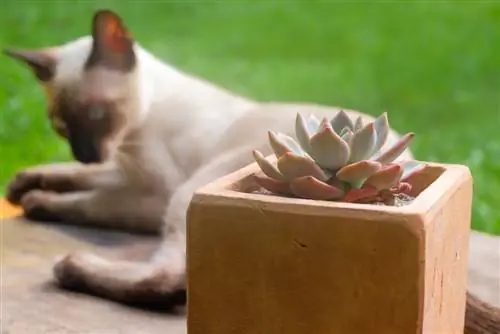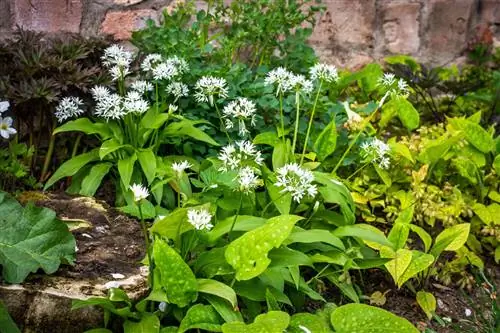- Author admin [email protected].
- Public 2023-12-16 16:46.
- Last modified 2025-06-01 06:02.
The list of poisonous plants for cats is long. Concerned hobby gardeners in the cat household know: If a plant species is not explicitly classified as a poisonous plant, this does not necessarily give the all-clear. Read here whether houseleek is poisonous to cats or not?

Is a houseleek poisonous to cats?
Overall, houseleek is not poisonous to cats. For this reason, Sempervivum is included on most non-toxic cat plant lists. However, the centuries-long use of houseleek as a medicinal plant raises questions. Against this background, a more differentiated consideration of potential effects and dangers for the sensitive cat's stomach makes sense:
- House leeks contain a high concentration of effective ingredients, such as mucilage, bitter and tannins.
- As a traditional medicinal plant, houseleek is primarily used externally.
- Consuming large quantities may cause nausea or vomiting in humans, cats and dogs.
Fertilizers and sprays put a strain on houseleeks - what to do?
Houseleek from the store shelf cannot be seen to see whether chemical sprays have accumulated on the leaves. Experts on plants that are poisonous to animals also point out that the substrate of purchased Sempervivum may contain toxic fertilizer. For the benefit of your furry friend, we recommend thisImmediate care on the day of purchase: for a houseleek in a pot.
- Unpot the houseleek.
- Rush the substrate and all plant parts.
- Fill a bowl with expanded clay as drainage.
- As a substrate, mix organic, peat-free cactus soil with coconut fibers and expanded clay or sand.
- Plant houseleek and water.
How do I keep my cat away from houseleeks?
Yawning boredom is the main motive when a cat attacks houseleeks or other potted plants. In everyday life, all strategies that distract your cat fromnibbling houseleeks or keep them away:
- Place a pot of cat grass next to the houseleek.
- Place the houseleek pot in the decorative bird cage.
- Cultivate Sempervivum as an ampel plant.
- Put a cat net over the houseleek.
- Distribute cat toys around the apartment and on the balcony, such as balls, clicker training or a fidget board.
Tip
Turtles would plant houseleeks
Turtles love to eat houseleeks for their lives. The armored gourmets love to nibble on the juicy leaf rosettes on hot summer days for an extra portion of moisture. On this occasion, the demanding armored animals benefit from the extremely he althy ingredients such as potassium, malic acid, vitamins and mucilage. Sempervivum are therefore a good choice in the planting plan for the turtle outdoor enclosure.






